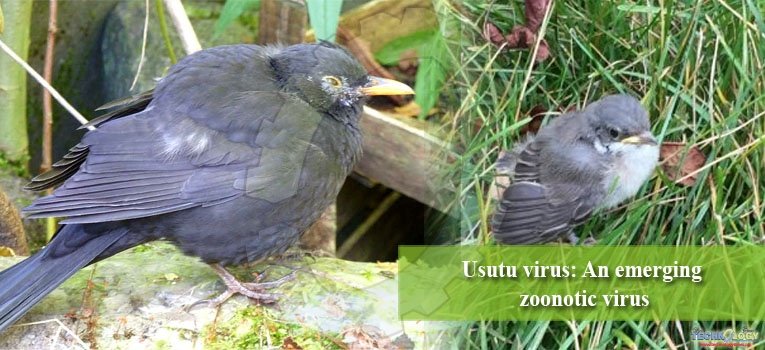The Pakistan haven’t seen many of the virus that are more common in Africa and Asia, but Pakistan do have mosquitoes and other vectors.
 These are often the same or similar mosquitoes as found around the world; just as globalization spreads viruses, it also spreads mosquitoes.
These are often the same or similar mosquitoes as found around the world; just as globalization spreads viruses, it also spreads mosquitoes.
Do we know what the next virus will be? The simple answer is no, we don’t. And before there’s another virus that takes us by surprise, it would be good to know as much as possible about the many viruses that could possibly spread.
Like Zika, Chikungunya, and different strains of Dengue that we’ve seen in recent years in the European countries. As we look more, we find more, too.
There are also viruses that we are just beginning to recognize as they begin to spread further and further. One of these viruses, which seems mild but may hold surprises, is the Usutu virus.
Usutu virus:
The genus Flavivirus of family Flaviviridae is composed of more than 70 viruses. Among them, Japanese encephalitis virus (JEV), West Nile virus (WNV), dengue virus (DENV), and yellow fever virus are important threats to human health. Usutu virus (USUV) is a mosquito-borne flavivirus belonging to the JEV serocomplex and thus is closely related to JEV, and WNV.
Vector:
USUV has been isolated from mosquito species that include Culex pipiens, Culex neavei, Culex perexiguus, Aedes albopictus, Aedes caspius, Anopheles maculipennis, Culex perfuscus, Coquillettidiaaurites, and Mansonia Africana. Of these, Culex pipiens is considered to be the most common vector.
Host Range:
USUV is highly pathogenic to several bird species, such as the blackbird (T. merula), the great gray owl (Strixnebulosa), the blue tit (Parus coeruleus), the house sparrow (Passer domesticus) the great tit (Parus major).
The nuthatch (Sittaeuropaea), the robin (Erithacusrubecula), and the song thrush (Turdusphilomeus). Humans are considered as incidental and dead-end host for this virus.
Life Cycle of USUV:
Its natural life cycle involves mosquito-bird-mosquito cycles, in which mosquitoes act as vectors and birds as amplifying hosts. Mosquitoes facilitate viral transmission to humans, horses, and rodents, which then act as incidental hosts.
Clinical Signs and Symptoms:
The observed symptoms in wild birds includes hepatosplenomegaly, neuronal necrosis, and necrotic changes of liver, spleen, and heart.
In human, this virus may just cause a rash and a fever. The infection may be mild and may pass quickly. However, there is a worry that for a small number, the infection may be more severe.
Zoonotic Potential
The zoonotic potential of USUV was initially described in the Central African Republic and recently confirmed in Europe by reports of neuroinvasive infections caused by this virus.
In September 2009, the first two human USUV infections in Europe have been reported in Italy, representing the first cases of human neuroinvasive infection ever, even though neuroinvasiveness in mice after experimental infection has been already demonstrated.
The patients, an orthotropic liver transplantation recipient and a patient with diffuse large B-cell lymphoma, suffered from severe neurological impairment caused by encephalitis, demonstrating the role of USUV as a human pathogen at least for immunocompromised individuals. These cases raised the concern that the virus might be much more serious for some individuals.
Transmission to humans:
Human catch it from a mosquito bite. But not all mosquitoes can (or will) carry the virus. The virus seems to be carried by Culex mosquitoes, especially Culex pipiens. The birds in which the virus is found often fly long distances, even as far as Asia. Similar birds are found in the America.
Diagnostic Test:
Most labs would not be able to test for it. A healthcare professional would need to contact a specialty referral laboratory to handle a specimen.
Treatment:
There is no treatment for this virus. Because, most infections in healthy people appear to be mild and no severe symptoms have seen so far.
Author: Sana Majeed *1, Aisha Khatoon1, Zain- Ul- Abidin2, Ashiq Ali1, Aneela Amin1, Yasir Nawaz1.
1 Department of Pathology, Faculty of Veterinary Science, University of Agriculture Faisalabad, Pakistan. 2 Veterinary Research Institute, Lahore, Pakistan.
* Corresponding Author Email: sanamajeed243@gmail.com